3-Methylsalicylic acid
Synonym(s):o-Cresotic acid;2-Hydroxy-3-methylbenzoic acid
- CAS NO.:83-40-9
- Empirical Formula: C8H8O3
- Molecular Weight: 152.15
- MDL number: MFCD00002448
- EINECS: 201-473-8
- SAFETY DATA SHEET (SDS)
- Update Date: 2024-12-18 14:15:30
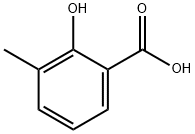
What is 3-Methylsalicylic acid?
Chemical properties
White To Slightly Reddish Crystalline Solid
The Uses of 3-Methylsalicylic acid
3-Methylsalicylic acid is used in manufacture of dyes.
The Uses of 3-Methylsalicylic acid
Toxicity is similar to salicylic acid. Used in manufacturing of dyes
The Uses of 3-Methylsalicylic acid
analgesic, antiseptic
Definition
ChEBI: A monohydroxybenzoic acid consisting of salicylic acid carrying a methyl group at the 3-position.
Synthesis Reference(s)
Synthesis, p. 758, 1984 DOI: 10.1055/s-1984-30960
General Description
3-Methylsalicylic acid reacts with WOCl4 to yield tungsten(VI) oxo-salicylate complexes.
Purification Methods
Crystallise the acid from water. [Beilstein 10 H 220, 10 II 131, 10 III 505, 10 IV 601.]
Properties of 3-Methylsalicylic acid
| Melting point: | 163-165 °C (lit.) |
| Boiling point: | 234.6°C (rough estimate) |
| Density | 1.2143 (rough estimate) |
| vapor pressure | 0.065-0.307Pa at 25℃ |
| refractive index | 1.4945 (estimate) |
| storage temp. | Inert atmosphere,Room Temperature |
| solubility | methanol: soluble5%, clear to slightly hazy (colorlessto faint brown) |
| form | Fine Powder |
| pka | pK1:2.99 (25°C) |
| color | Almost white |
| PH | 2.8 (1.5g/l, H2O, 20℃) |
| Water Solubility | 1.5 g/L (20 ºC) |
| Merck | 14,2581 |
| BRN | 2086811 |
| CAS DataBase Reference | 83-40-9(CAS DataBase Reference) |
| NIST Chemistry Reference | Hydroxytoluic acid(83-40-9) |
| EPA Substance Registry System | 3-Methylsalicylic acid (83-40-9) |
Safety information for 3-Methylsalicylic acid
| Signal word | Danger |
| Pictogram(s) |
 Corrosion Corrosives GHS05  Exclamation Mark Irritant GHS07 |
| GHS Hazard Statements |
H302:Acute toxicity,oral H315:Skin corrosion/irritation H318:Serious eye damage/eye irritation H335:Specific target organ toxicity, single exposure;Respiratory tract irritation |
| Precautionary Statement Codes |
P261:Avoid breathing dust/fume/gas/mist/vapours/spray. P264:Wash hands thoroughly after handling. P264:Wash skin thouroughly after handling. P280:Wear protective gloves/protective clothing/eye protection/face protection. |
Computed Descriptors for 3-Methylsalicylic acid
| InChIKey | WHSXTWFYRGOBGO-UHFFFAOYSA-N |
3-Methylsalicylic acid manufacturer
Yash Rasayan and Chemicals
1Y
Phone:+91-7778005388
Whatsapp: +91 7778005388
product: 83-40-9 3-Methylsalicylic acid 99%
New Products
(S)-3-Aminobutanenitrile hydrochloride 4-Methylphenylacetic acid N-Boc-D-alaninol N-BOC-D/L-ALANINOL Tert-butyl bis(2-chloroethyl)carbamate 3-Morpholino-1-(4-nitrophenyl)-5,6-dihydropyridin- 2(1H)-one Furan-2,5-Dicarboxylic Acid Tropic acid 1-Bromo-3,5-Di-Tert-Butylbenzene S-2-CHLORO PROPIONIC ACID ETHYL ISOCYANOACETATE 2-Bromo-1,3-Bis(Dimethylamino)Trimethinium Hexafluorophosphate 4-IODO BENZOIC ACID 3-NITRO-2-METHYL ANILINE 1-(2,4-DICHLOROPHENYL) ETHANAMINE (2-Hydroxyphenyl)acetonitrile 4-Bromopyrazole 2-(Cyanocyclohexyl)acetic acid 4-methoxy-3,5-dinitropyridine 1-(4-(aminomethyl)benzyl)urea hydrochloride 2-aminopropyl benzoate hydrochloride diethyl 2-(2-((tertbutoxycarbonyl)amino) ethyl)malonate tert-butyl 4- (ureidomethyl)benzylcarbamate Ethyl-2-chloro((4-methoxyphenyl)hydrazono)acetateRelated products of tetrahydrofuran
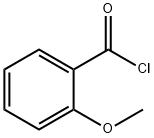
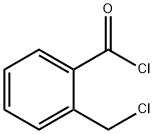

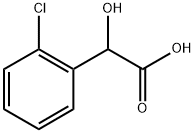
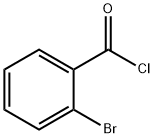



You may like
-
 83-40-9 3-Methylsalicylic acid 99%View Details
83-40-9 3-Methylsalicylic acid 99%View Details
83-40-9 -
 3-Methylsalicylic acid CAS 83-40-9View Details
3-Methylsalicylic acid CAS 83-40-9View Details
83-40-9 -
 3-Methylsalicylic Acid CAS 83-40-9View Details
3-Methylsalicylic Acid CAS 83-40-9View Details
83-40-9 -
 1975-50-4 98%View Details
1975-50-4 98%View Details
1975-50-4 -
 2-HYDROXY BENZYL ALCOHOL 98%View Details
2-HYDROXY BENZYL ALCOHOL 98%View Details
90-01-7 -
 2-Chloro-1,3-Bis(Dimethylamino)Trimethinium Hexafluorophosphate 221615-75-4 98%View Details
2-Chloro-1,3-Bis(Dimethylamino)Trimethinium Hexafluorophosphate 221615-75-4 98%View Details
221615-75-4 -
 14714-50-2 (2-Hydroxyphenyl)acetonitrile 98+View Details
14714-50-2 (2-Hydroxyphenyl)acetonitrile 98+View Details
14714-50-2 -
 118753-70-1 98+View Details
118753-70-1 98+View Details
118753-70-1
Statement: All products displayed on this website are only used for non medical purposes such as industrial applications or scientific research, and cannot be used for clinical diagnosis or treatment of humans or animals. They are not medicinal or edible.